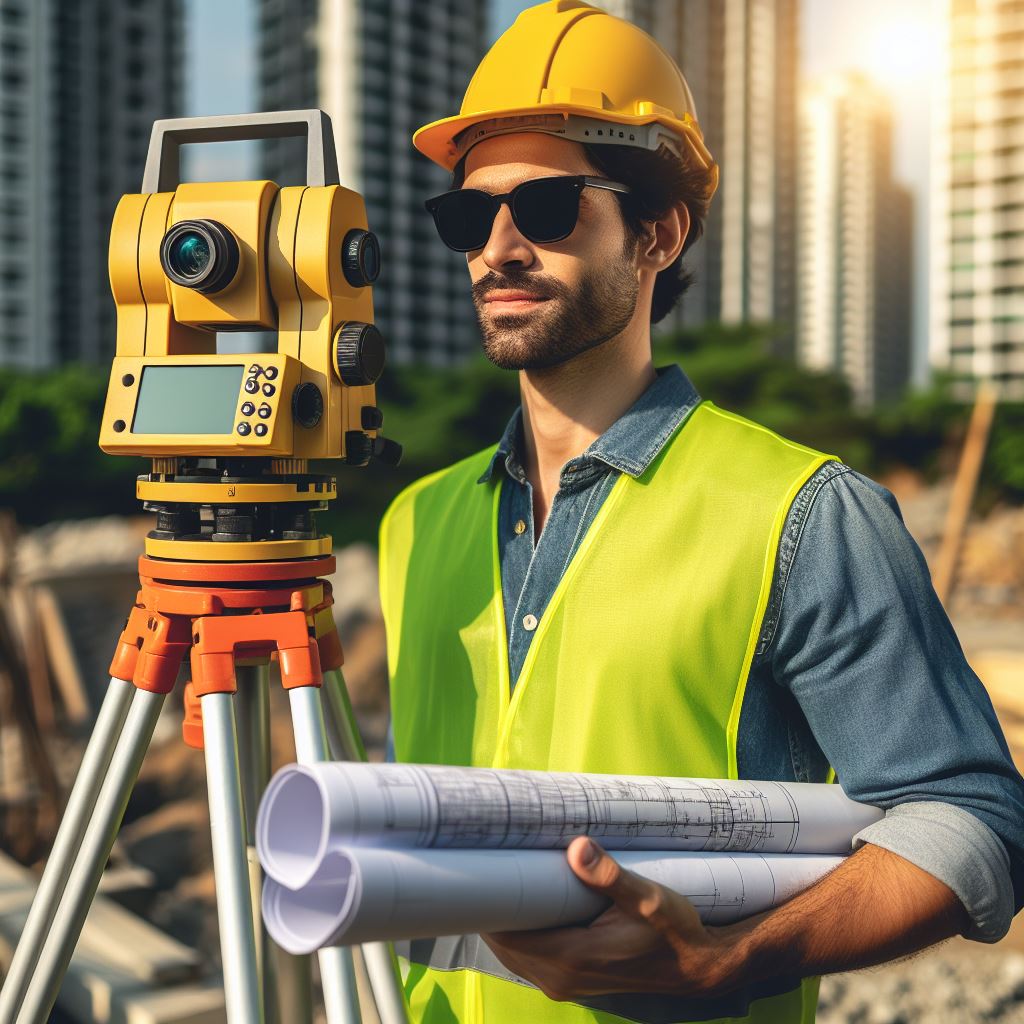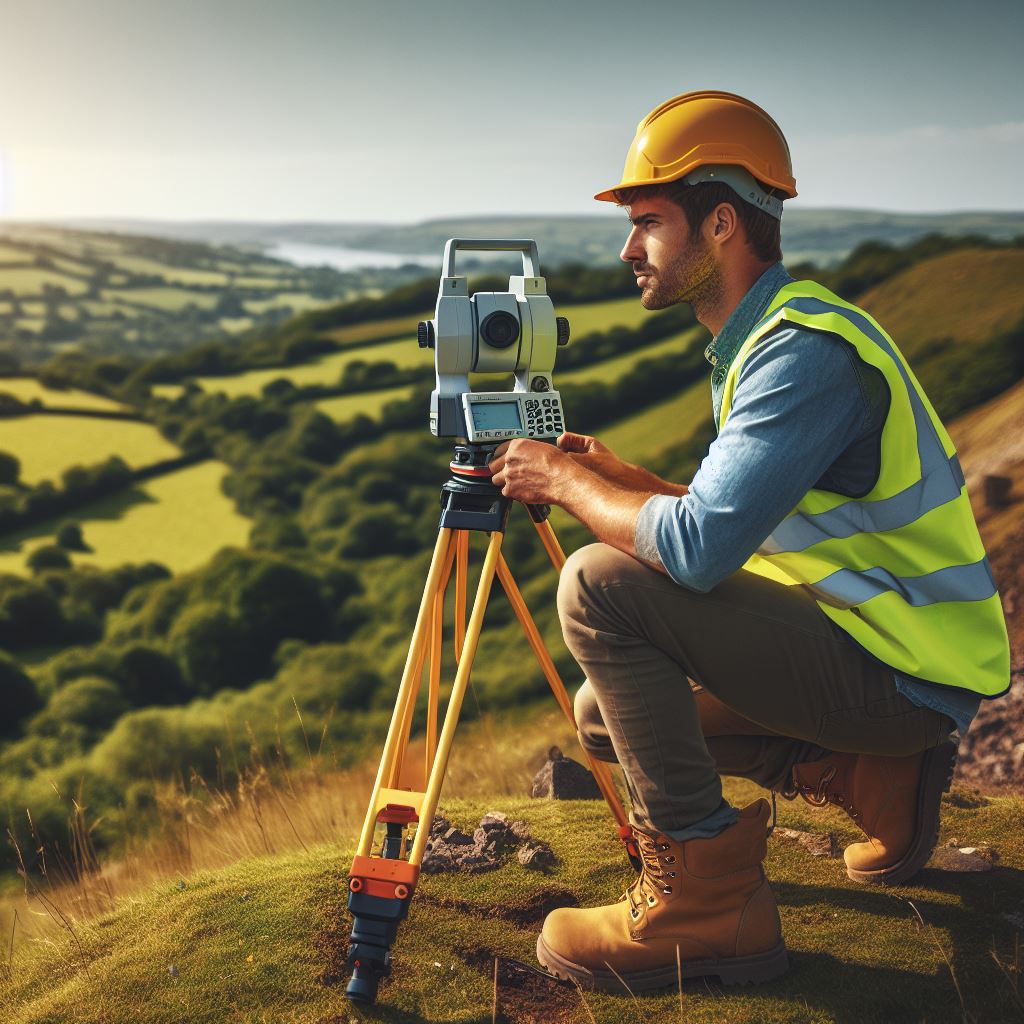Introduction
A. Historic Building Surveying
Historic building surveying is a meticulous examination, analysis, and evaluation of structures with cultural or historical significance.
B. Importance of Historic Buildings in the United Kingdom
- Rich Heritage: The UK boasts a wealth of historic buildings, reflecting its cultural tapestry.
- Architectural Significance: These structures contribute to the nation’s architectural identity, showcasing diverse styles and periods.
- Preservation of History: Historic buildings encapsulate stories and events, serving as tangible links to the past.
C. Purpose of the Blog Post
This blog post aims to:
- Illuminate the role of historic building surveying in preserving cultural heritage.
- Emphasize the vital importance of safeguarding the architectural treasures scattered across the United Kingdom.
- Provide insights and guidance into the nuanced field of surveying, offering a valuable resource for enthusiasts and professionals alike.
Overview of Historic Building Surveying
A. Definition and scope of historic building surveying
Historic building surveying refers to the process of evaluating and documenting historic structures in the United Kingdom.
It involves assessing the condition, significance, and value of these buildings.
The scope of historic building surveying extends beyond mere physical examination.
It also involves research and analysis of historical documents, photographs, and other relevant sources.
The aim is to provide a comprehensive understanding of a building’s history and architectural significance.
B. Role and responsibilities of a historic building surveyor
A historic building surveyor plays a crucial role in preserving and conserving historic structures.
They are responsible for conducting thorough inspections and assessments of these buildings.
Their main responsibilities include identifying potential risks, such as structural instability, and recommending appropriate conservation and maintenance measures.
They also advise on planning applications and provide expertise in preserving historical authenticity during restoration projects.
Additionally, a historic building surveyor may be involved in carrying out research, writing reports, and delivering expert testimony.
Their role is essential in ensuring the long-term preservation and sustainable use of historic buildings.
C. Importance of historical research in surveying
Historical research is a crucial aspect of historic building surveying.
It helps uncover the story behind a building and provides important context for its architectural features and significance.
By delving into historical resources, such as archives, maps, and records, surveyors can gain insight into a building’s construction methods, original design, alterations, and previous uses.
This information is vital for accurately assessing a building’s historical value and developing effective conservation strategies.
Historical research also helps establish a building’s cultural and social significance within its local or national context.
This knowledge enables surveyors to make informed decisions about appropriate restoration methods and ensures the preservation of the building’s heritage value.
Historic building surveying is a multidisciplinary field that combines architectural, historical, and conservation expertise.
It involves thorough inspections, research, and analysis to assess the significance and condition of historic structures.
A historic building surveyor plays a crucial role in preserving and conserving these buildings.
Their responsibilities include identifying risks, recommending conservation measures, and advising on planning applications.
Historical research is a fundamental component of surveying as it provides valuable insights into a building’s history, design, and cultural significance.
This knowledge ensures that restoration projects uphold the building’s heritage value and contribute to the understanding of the UK’s architectural legacy.
By recognizing the importance of historic buildings and investing in their preservation, the United Kingdom continues to celebrate its rich history and cultural heritage.
Read: Internships in UK Electrical Engineering
Personalized UK Career Consulting
Receive tailored career guidance designed just for you. Get actionable steps and expert support to boost your career in 1-3 days. Take control of your career now.
Get StartedTypes of Historic Building Surveys
Historic building surveys play a crucial role in preserving the architectural heritage of the United Kingdom.
These surveys provide valuable information about the historical significance, condition, and potential restoration strategies for historic buildings.
Various types of surveys are conducted based on the level of research and investigation required.
A. Document research and site inspection
A Level 1 historic building survey involves a comprehensive review of existing documents related to the building, such as architectural drawings, photographs, and historical records.
In addition, a thorough site inspection is carried out to assess the overall condition of the building.
This level of survey is most suitable for buildings with less historical significance or those that have been extensively studied in the past.
It provides a basic understanding of the building’s history and identifies any potential issues that may need further investigation.
B. Detailed examination and analysis
A Level 2 historic building survey encompasses a detailed examination and analysis of both the interior and exterior of the building.
This includes architectural features, structural elements, materials, and finishes.
The surveyors use advanced techniques and equipment to assess the condition of the building and identify any deterioration, damage, or potential risks.
This level of survey is typically conducted for buildings with moderate historical significance or those that require detailed analysis for restoration or renovation purposes.
It provides a comprehensive understanding of the building’s architectural features, construction techniques, and potential issues that may require attention.
C. Extensive research and investigation
A Level 3 historic building survey involves extensive research and investigation, including archival research, dendrochronology (tree-ring dating), and scientific analysis of materials.
This level of survey is recommended for buildings with high historical significance or those that require in-depth understanding for conservation or adaptive reuse.
The Level 3 survey provides a wealth of information about the building’s history, evolution, and construction techniques.
It helps in identifying and preserving the authentic elements of the building and formulating appropriate strategies for its conservation or adaptive reuse.
In fact, historic building surveys in the United Kingdom are conducted at different levels based on the research and investigation required.
Level 1 surveys involve document research and site inspection, while Level 2 surveys consist of detailed examination and analysis.
Level 3 surveys require extensive research and investigation to uncover the building’s historical significance and inform conservation strategies.
These surveys contribute significantly to the preservation of the United Kingdom’s architectural heritage and ensure its legacy for future generations.
Read: Electrical Engineering in UK vs Europe
Techniques and Tools Used in Historic Building Surveying
A. Traditional building materials and construction techniques
- Stone masonry, timber framing, and lime mortar are commonly used in historic buildings.
- These traditional materials require specialized knowledge and skills for proper maintenance and repair.
- Timber framing techniques include mortise and tenon joints and pegged construction.
- Stone masonry involves using different types of stones and techniques like ashlar and rubble.
- Lime mortar, made from lime and aggregate, is used for pointing and rendering walls.
B. Modern technologies for surveying historic buildings
- 3D laser scanning provides accurate measurements and detailed digital representation of historic structures.
- Photogrammetry uses photographs to create 3D models and measure dimensions of buildings.
- GPR (Ground Penetrating Radar) helps identify hidden structures, underground utilities, and foundations.
- Thermography detects variations in temperature to identify areas of moisture or energy loss.
- Remote sensing techniques using drones or satellite imagery provide an aerial view of buildings.
C. Importance of preservation and conservation principles
- Preservation focuses on maintaining the existing form, materials, and historic significance of buildings.
- Conservation aims to repair and restore the functionality while preserving the historic fabric.
- These principles ensure the long-term sustainability and cultural value of historic buildings.
- Preservation and conservation help retain the authenticity and character of historic structures.
- Applying these principles requires a thorough understanding of the building’s history and construction techniques.
In short, historic building surveying requires a combination of traditional knowledge and modern technologies.
Understanding traditional building materials and techniques is crucial for proper maintenance and repair.
However, modern tools like 3D laser scanning and photogrammetry provide accurate measurements and detailed digital representations.
Preservation and conservation principles play a vital role in maintaining the cultural value and authenticity of historic buildings.
By applying these techniques and principles, we can ensure the preservation of the United Kingdom’s rich architectural heritage.
Read: Career Pathways in UK Electrical Engineering

Challenges Faced in Historic Building Surveying
A. Age-related deterioration of materials
- Historic buildings often suffer from deterioration of materials due to their age.
- This can include issues such as decay, erosion, and structural instability.
- Surveyors need to thoroughly assess and document the condition of these materials.
- Specialists may be required to carry out detailed inspections and provide recommendations for restoration.
- Identifying the extent of deterioration is crucial for planning appropriate conservation measures.
B. Compliance with local heritage regulations
- Historic building surveyors must navigate complex local heritage regulations.
- These regulations aim to preserve the historical significance of buildings and their surroundings.
- Compliance often involves obtaining specific permissions and adhering to strict guidelines.
- Surveyors must have a deep understanding of these regulations to ensure legal and ethical compliance.
- Failure to comply can result in penalties and even legal implications for the surveyor and stakeholders.
C. Balancing conservation with functional requirements
- Historic buildings often need to meet modern functional requirements while preserving their heritage value.
- Surveyors must find ways to incorporate modern amenities without compromising the building’s integrity.
- This involves careful planning and consideration of the building’s historical features and architectural significance.
- Preservation techniques, such as adaptive reuse, may be employed to accommodate functional needs.
- Achieving a balance between conservation and functionality is a complex task that requires expertise and creativity.
In essence, historic building surveying in the United Kingdom poses several challenges.
The age-related deterioration of materials requires thorough assessment and restoration expertise.
Compliance with local heritage regulations is essential for preserving the historical significance of buildings.
Your Dream Job Starts with a Perfect CV
Get a tailored CV and cover letter that captures your unique strengths and stands out in your industry. Let us help you make an unforgettable first impression.
Get StartedBalancing conservation with functional requirements demands careful planning and creativity.
However, despite these challenges, historic building surveying plays a crucial role in preserving our heritage for future generations.
Read: Top UK Universities for Electrical Engineering
Case Studies
A. Restoration of a Listed Building in London
1. Project Overview
The iconic listed building in London underwent meticulous restoration to preserve its historical significance.
2. Challenges Faced
- Delicate restoration work required expertise.
- Adherence to strict heritage guidelines posed challenges.
- Balancing modern functionality while preserving historic elements demanded careful planning.
3. Outcome and Impact on the Community
- Restoration showcased the building’s architectural grandeur.
- Community pride restored, fostering a sense of heritage.
- Increased tourism positively impacted the local economy.
B. Adaptive Reuse of a Historic Property in Edinburgh
1. Project Overview
In Edinburgh, a historic property saw transformation through adaptive reuse, aligning preservation with contemporary needs.
2. Approach Towards Preservation
- Emphasis on preserving original architectural features.
- Integration of modern amenities while respecting historical context.
- Collaboration with heritage experts for authentic restoration.
3. Benefits to the Local Economy and Environment
- Boost to local economy through increased footfall.
- Reduced environmental impact through adaptive reuse.
- Revitalized space contributed to community well-being.
In both cases, these case studies exemplify the delicate balance between honoring history and meeting the evolving needs of society.
The success stories of London and Edinburgh demonstrate the significance of thoughtful planning, community engagement, and expert collaboration in historic building surveying.
As the preservation of heritage continues to be a priority, these case studies serve as inspirations for future projects, showcasing the positive impact on both the architectural landscape and the communities they serve.
Future of Historic Building Surveying in the United Kingdom
A. Increasing demand for conservation and restoration projects
- The future of historic building surveying in the United Kingdom is bright.
- There is an increasing demand for conservation and restoration projects.
- With a growing appreciation for historic buildings, more properties require expert care.
- Owners and organizations recognize the value of preserving these architectural treasures.
- This demand ensures a steady flow of projects for historic building surveyors.
B. Importance of skilled professionals in the field
- Skilled professionals play a crucial role in historic building surveying.
- They have the necessary knowledge, expertise, and experience to assess and document historic structures.
- These professionals ensure that the conservation and restoration work is done accurately and responsibly.
- They also contribute to the sustainable development and maintenance of historic properties.
- Without skilled professionals, the integrity and authenticity of these buildings may be compromised.
C. Career opportunities and growth prospects
- The future holds a wealth of career opportunities for historic building surveyors.
- As the demand for conservation and restoration projects increases, so does the need for professionals in the field.
- Surveyors can find employment in various sectors, including architectural firms, heritage organizations, and conservation bodies.
- They can also work independently or collaborate with teams of experts in interdisciplinary projects.
- Additionally, there are opportunities to specialize in specific types of historic buildings or architectural periods.
- With ongoing professional development, surveyors can enhance their skills and expertise.
- This continuous growth ensures a fulfilling and dynamic career path in historic building surveying.
In review, the future of historic building surveying in the United Kingdom is promising.
The increasing demand for conservation and restoration projects highlights the importance of skilled professionals in the field.
There are abundant career opportunities and growth prospects for those interested in this niche area of surveying.
By preserving and maintaining historic buildings, surveyors contribute to the cultural heritage and sustainable development of the United Kingdom.
Learn More: UK Mech Engineers: Skills & Competencies
You Might Also Like: Mechanical Engineer Roles: What to Expect
Optimize Your LinkedIn for Success
Boost your LinkedIn profile with a professional bio, keyword-rich headline, and strategic recommendations that attract recruiters. Stand out from the crowd and get noticed.
Optimize NowExplore Further: Emerging Materials in UK Civil Engineering
Conclusion
A. Significance of Historic Building Surveying
Historic building surveying in the United Kingdom preserves our heritage, safeguarding structures that embody rich histories. It’s a meticulous discipline crucial for conservation efforts.
B. Final Thoughts and Encouragement
Embarking on this field promises a rewarding journey.
Dive into historic building surveying with enthusiasm—it’s not just a profession but a passion.
Embrace the challenges, for within them lie opportunities to safeguard our architectural legacy.
C. Call to Action
- Share Experiences: Readers, your experiences in historic building surveying are invaluable. Share your insights, challenges, and triumphs. Let’s create a community of knowledge and passion.
- Ask Questions: Curiosity fuels progress. If you have queries about historic building surveying, don’t hesitate. Ask questions, spark discussions, and let’s grow together in preserving the UK’s architectural tapestry.
[E-Book for Sale]
500 Cutting-Edge Tech Startup Ideas for 2024 & 2025: Innovate, Create, Dominate
$19.99 • 500 Tech Startup Ideas • 62 pages
You will get inspired with 500 innovative tech startup ideas for 2024 and 2025, complete with concise descriptions to help you kickstart your entrepreneurial journey in AI, Blockchain, IoT, Fintech, and AR/VR.




